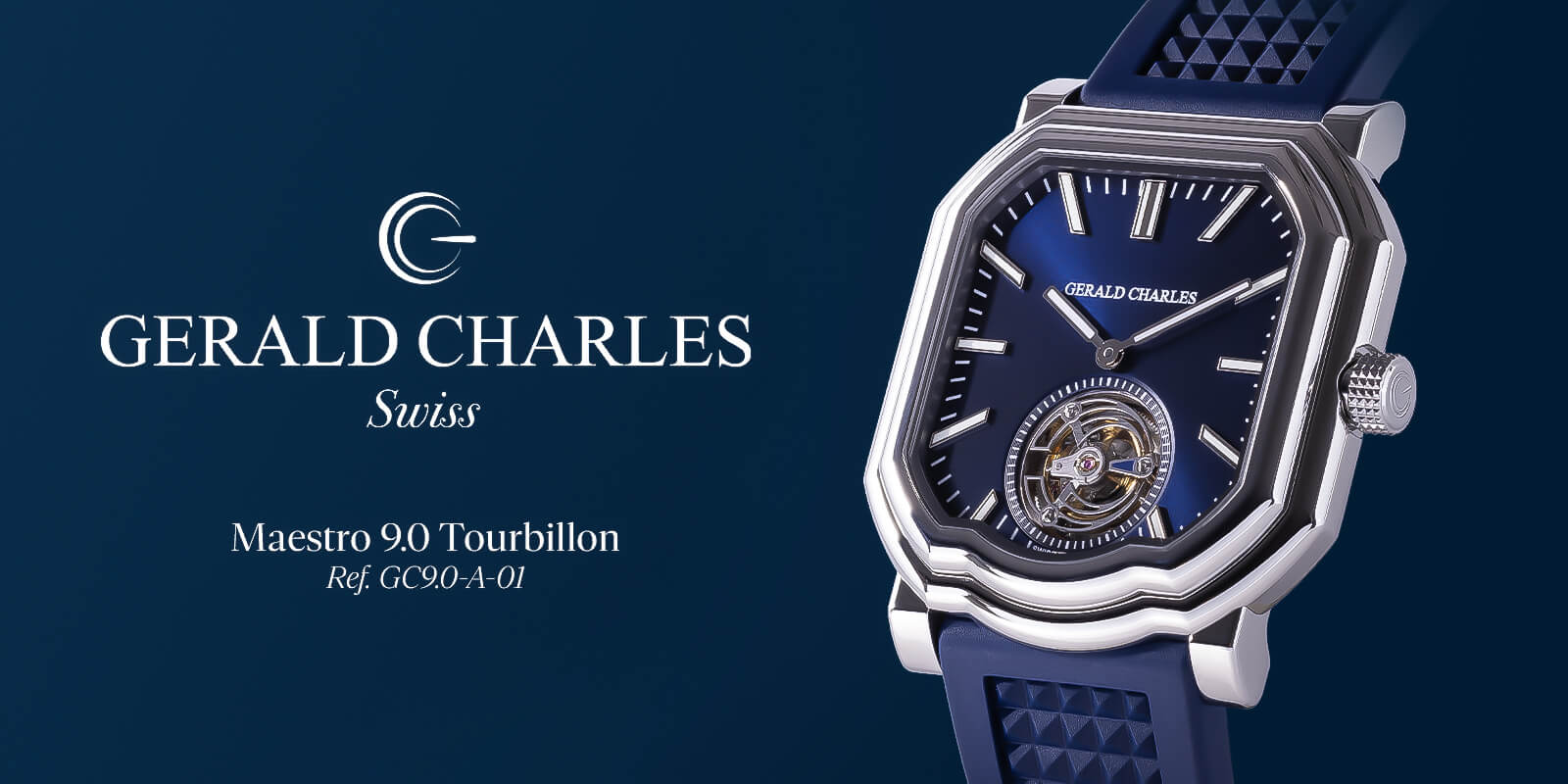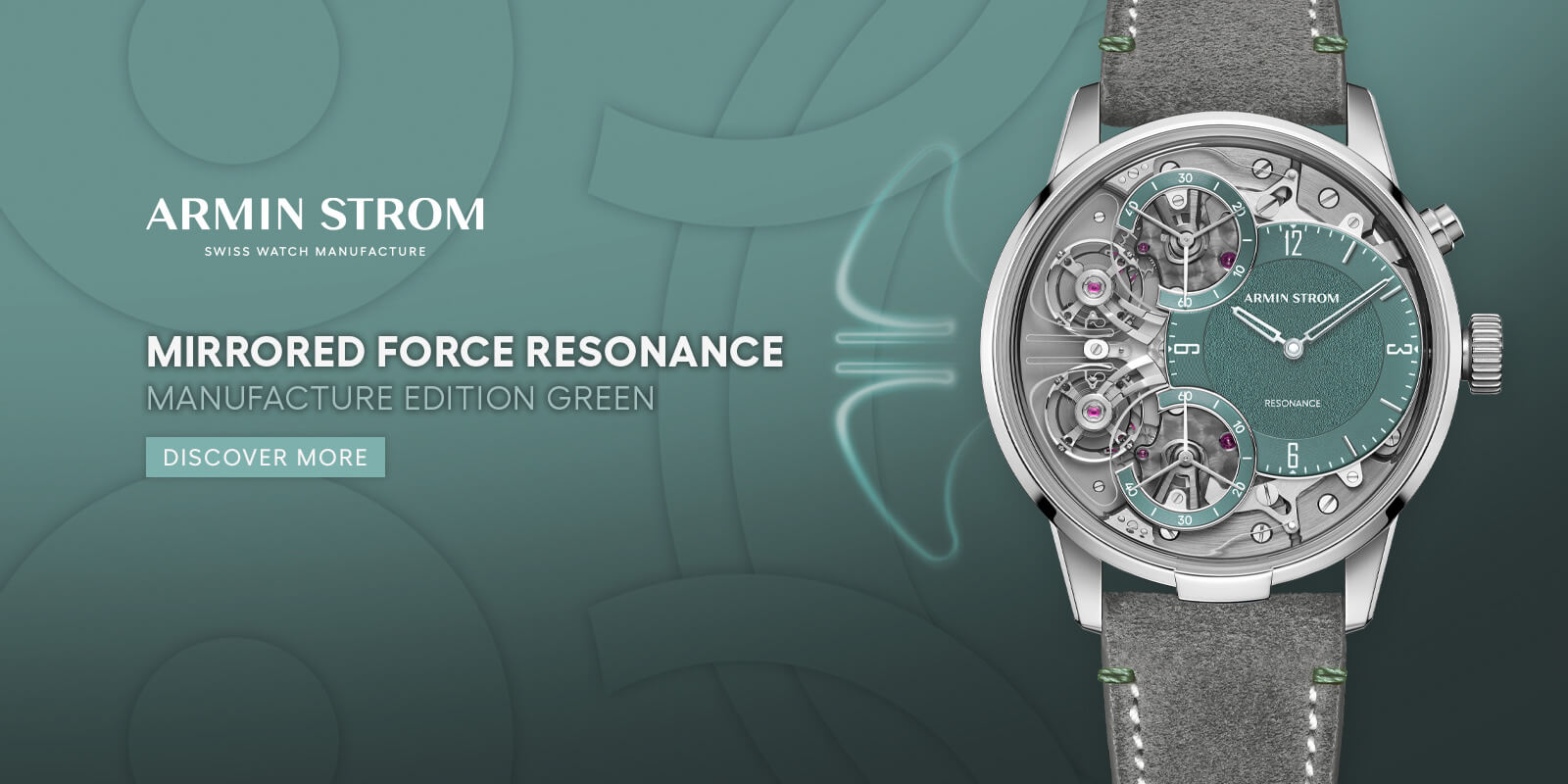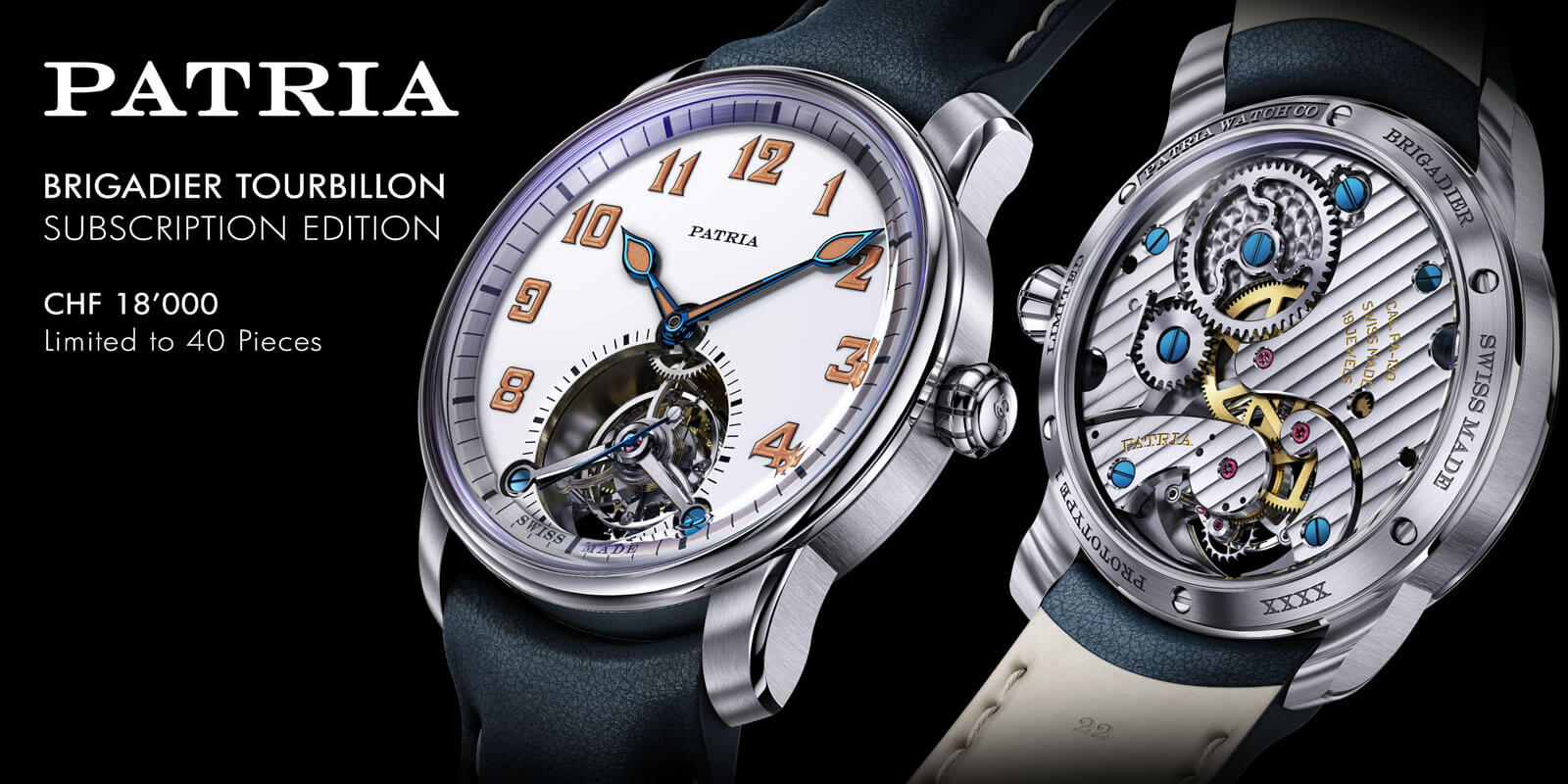Grönefeld 1941 Grönograaf: My Once Predicted Winner for the 2022 ‘Best Chronograph’ at the 2022 Grand Prix d’Horlogerie de Genève – I (kind of) Called it Right
by Ian Skellern
When Tim and Bart Grönefeld showed me their prototype 1941 Grönograaf during Watches & Wonders 2022, I thought it was fantastic. I loved it. But I told them that I didn’t think it would win “Best Chronograph” 2022 at the Grand Prix d’Horlogerie de Genève in November because I thought that prize would go to the then-soon-to-be-released MB&F LM Sequential EVO, which I’d seen a couple of days beforehand.

Grönefeld 1941 Grönograaf
As the Grönefeld 1941 Grönograaf and MB&F LM Sequential EVO are – and I’m making this statement before even the top six watches in each category have been picked – the top two contenders for this year’s GPHG Best Chronograph 2022 prize, I initially thought I’d do a head-to-head “Grönograaf vs. LM Sequential EVO Showdown.” But as I delved deeper into each watch, I realized that, while both were chronographs, they were so different in virtually every aspect apart from being wristwatches that they are incomparable.
Not just apples and oranges different, more like apples and bananas.

Grönefeld 1941 Grönograaf
And I also realized that, while I’d previously thought that the MB&F LM Sequential EVO would take Best Chronograph at the 2022 GPHG, I now think that the Grönefeld 1941 Grönograaf will win. However, not because I think that the Grönograaf is a better chronograph than the Sequential (they are incomparable), but because it’s a more traditional chronograph and GPHG juries tend to the more conventional (2021’s “Best Chronograph” was the Zenith El Primero Chronomaster Sport).
* Update 12 Oct 2022: I changed my mind and am now predicting the MB&F Sequential to win.
** Update Nov 2022. The Sequential did win a prize, but not Best Chronograph: it took the Aiguille d’Or, the top prize for best watch over all categories.
———————————————————————————–
———————————————————————————–
Tim and Bart Grönefeld are no strangers to the horological red carpet: at the Grand Prix d’Horlogerie de Genève (GPHG) they’ve been awarded Best Tourbillon 2014 for their Parallax Tourbillon and Best Men’s 2016 for their 1941 Remontoire.

Grönefeld 1941 Grönograaf
Here I’ll focus on the Grönefeld 1941 Grönograaf and follow up with another post on the MB&F LM Sequential EVO.
It’s worth noting that there are presently two versions of the 1941 Grönograaf, a (sold-out) limited edition of 25 pieces with tantalum cases and a 188-piece limited edition in stainless steel (new orders currently suspended due to high demand). While the tantalum case is much harder (and harder to machine and finish) than stainless steel, the two versions are visually indistinguishable until turned over (where the engraving reveals the edition).
Grönefeld 1941 Grönograaf
At first glance, the Grönefeld 1941 Grönograaf appears to be a nicely sized (40 mm diameter), extremely well executed, and relatively discreet, traditional two-pusher chronograph. And it is just that: an extremely nicely executed, relatively discreet, traditional two-pusher chronograph. Move on folks, nothing more to see here.

Grönefeld 1941 Grönograaf on the wrist
But that unusual regulator mechanism visible at 6 o’clock on the dial offers a clue that, while the 1941 Grönograaf might be traditional in appearance, it’s anything but traditional regarding innovative features.
———————————————————————————–
———————————————————————————–
When a long central second hand – and chronographs usually time seconds with a long, easy-to-read central second hand – gets reset back to zero, it’s like a crash test car hitting the wall. It’s a brutal stop from a relatively high speed. The long hand reverberates back and forth as it swings to a stop, causing stress and wear of the components. It’s not the instant reset that the eye sees as this video below illustrates.
The dial side regulator of the Grönograaf dampens excessive speed of the chronograph’s fast, flying resetting central hand as well as the smaller 30-minute hand, virtually eliminating the shock and wear undergone by all other chronograph movements when resetting (Agenhor AgenGraphe movements excepted).

Grönefeld 1941 Grönograaf
Tour of the Grönefeld Grönograaf’s dial
A counterclockwise tour of the Grönograaf’s dial reveals an hour-and-minute subdial at 1 o’clock for reading the time, an arc with a blue arrowhead indicating the state of the 53-hour power reserve, a running seconds subdial at 9 o’clock, the chronograph’s 30-minute counter at 6 o’clock, and that eye-catchingly blued chronograph central second hand.

Grönefeld 1941 Grönograaf regulator
But the first thing that attracts attention on the dial is at 3 o’clock: that silent centrifugal regulator with its two shiny gold weights. That regulator spins when the chronograph is reset, and when resetting the central second hand and, to a lesser extent, the 30-minute hand move too fast, energy is transferred into spinning those gold weights so the chronograph hands reset at an optimal speed.
Centrifugal regulator
To my knowledge, all chronograph mechanisms reset the seconds and minutes by using hammers hitting heart-shaped cams. Pushing the reset button causes two steel hammers to forcefully hit and rotate the two cams. Those cams pivot at the axis of the chronograph’s minute and second hands. It’s the violent micro shock of these hammers hitting the cams that is transmitted into the resetting hands and reverberates in and around the movement that causes wear and can disrupt the timing.
And it’s the long central second hand that cops the worst of the shock: it oscillates frantically after its base hits a brick wall at high speed. And in other unfortunate news, the hand is usually friction-fit on its post and can be loosened by the micro shocks. That’s why central chronograph second hands are usually made as thin as possible (for low mass) while still being legible. A lighter and easier-to-move central second hand also means less load and wear on the movement when the chronograph is running.

Grönefeld 1941 Grönograaf
———————————————————————————–
———————————————————————————–
Apart from the Grönograaf, the only chronograph movement that I’m aware of with a soft-reset mechanism to date is the Agenhor AgenGraphe, which powers the Ming 20.01 chronograph, the Singer Track 1 chronograph, and the Fabergé Visionnaire Chronograph.
The AgenGraphe uses spiral springs and specially shaped cams to slow the speed of the chronograph’s resetting hands. Tim and Bart Grönefeld decided however that a centrifugal regulator would both be a very effective soft-reset solution and add an aminated visual spectacle to the dial.
Not satisfied with coming up with the world’s first centrifugal regulator chronograph soft-reset movement, the Grönefelds also minimized wear by replacing the usually hardened steel reset hammers with synthetic ruby rollers, which offer the same force but with reduced friction.

Grönefeld 1941 Grönograaf
And that movement!
When gazing through the display back, it’s easy to see that the movement is a work of art in itself. Dominated by a long, thin, arrow-headed, mirror-polished bridge, the chronograph mechanism is laid out as a three-dimensional sculpture, a work of art.

Grönefeld in-house Caliber G-04 chronograph movement visible through the back of the 1941 Grönograaf
It’s the best-looking chronograph movement I’ve seen since the A. Lange & Söhne Datograph and Datograph Perpetual.

Diving deep into the Grönefeld 1941 Grönograaf’s movement
If money is no object, and around $160,00 that’s likely to be an object for most, then you still couldn’t buy a new Grönograaf as the Grönefelds have already stopped taking new orders until further notice due to demand and long waiting lists. I think that anyone fast-moving and fortunate enough to be waiting years for their ordered Grönograaf will be more than happy to wait.

For more information, please visit www.gronefeld.com/collection/1941-gr–nograaf.
Quick Facts Grönefeld 1941 Grönograaf
Case: 40 x 11.3 mm, stainless steel or tantalum
Movement: manually wound Caliber G-04, lateral clutch column wheel chronograph, soft reset mechanism with centrifugal governor and ruby-jeweled reset hammers; 53-hour power reserve, 3 Hz/21,600 vph frequency, variable inertia free-sprung balance, 408 components including 45 jewels, some set in gold chatons
Functions: hours, minutes, seconds; chronograph with instant jumping minute counter
Strap/bracelet: buffalo leather, 20 mm tapering to 18 mm, steel or tantalum pin buckle to match case
Limitation: 188 pieces in stainless steel, 25 pieces in tantalum
Price: €155,000 (steel); €165,000 (tantalum)
Remark: tantalum edition sold out, no longer taking orders for stainless steel limited edition of 188 pieces
You may also enjoy:
Why I Bought It: Grönefeld 1941 Remontoire
Grönefeld 1941 Remontoire In The Horological House Of Orange
Copernicus, Alignment Shift, And The Grönefeld Parallax Tourbillon: A Nerd Story
Why The Grönefeld 1941 Remontoire Won Best Men’s Watch At The 2016 Grand Prix d’Horlogerie de Genève
Grönefeld One Hertz – A Collector’s Journey
Leave a Reply
Want to join the discussion?Feel free to contribute!






What a beautiful watch and an amazing feat of engineering!!!!